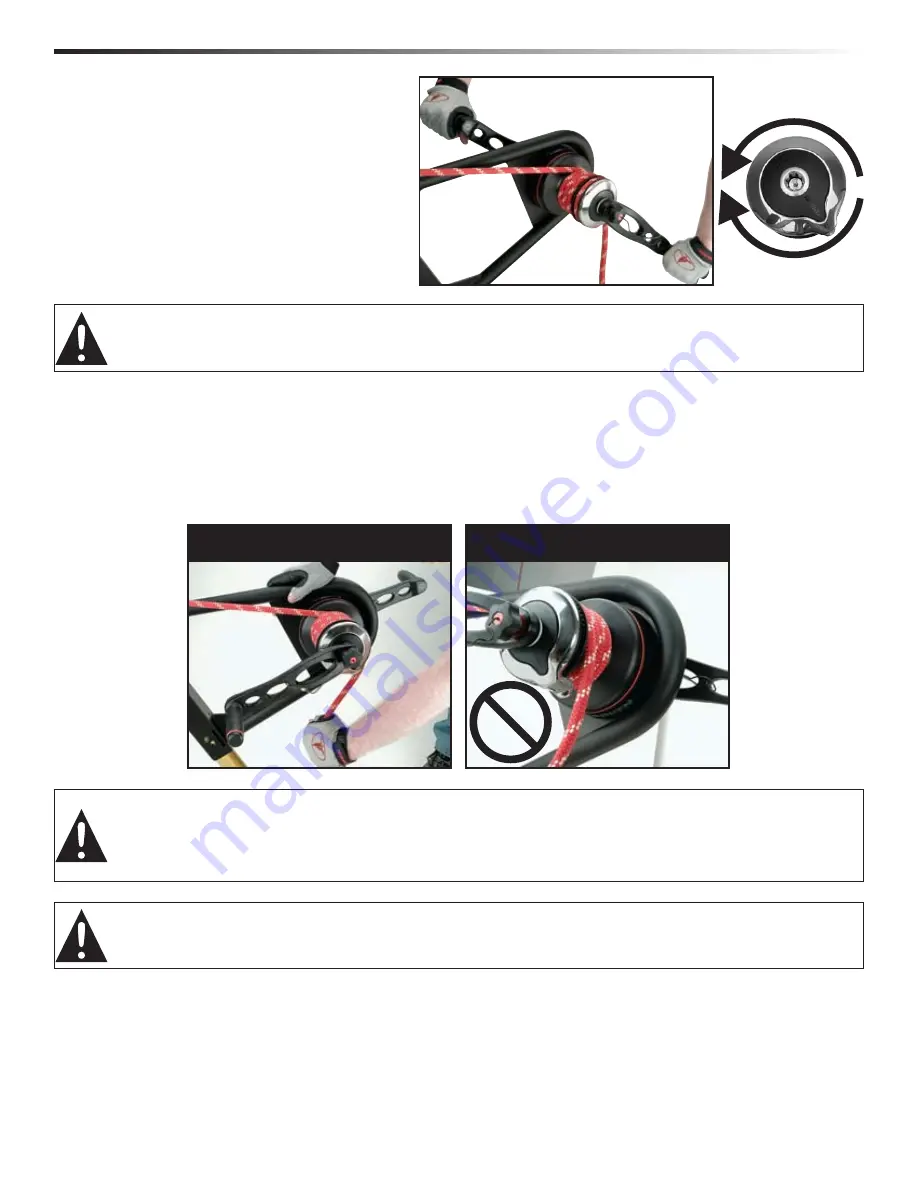
10
Access Winch
05-17-10
LOWErING LOAD
WARNING!
Use caution when lowering load using winch. Carefully hold rope when it is out of self-tailing jaws.
Rope tail must not be released. Releasing rope tail will result in rope slippage. When lowering is completed,
place line securely in self-tailing jaws. Rope turns alone may hold for a short time but will slip. Failure to hold
load will cause it to fall, possibly resulting in severe injury or death.
We recommend using a safety device in the final operating system, such as a grab-rope mechanism (e.g. Prussic
knot, rope-grab clutch). Engage grab rope mechanism or
clamp rope turns on drum with your hand. Carefully
unwind rope from self-tailing jaws only, while maintaining even tension on rope. Operator must hold rope,
maintaining tension at all times unless it is securely fastened in self-tailing jaws.
WARNING!
Do not take rope turns off winch drum until rope is completely unloaded. Taking turns off winch
drum will result in rapid rope slippage and failure to hold load. Failure to hold load will cause it to fall, possibly
resulting in severe injury or death.
D.
Begin turning handles counterclockwise.
Gears engage automatically depending on
direction handles are rotated. 1st gear: rotate
handles counterclockwise. 2nd gear: rotate
handles clockwise.
E. When handles become difficult to rotate in 1st
gear, reverse direction to access 2nd. A higher
power ratio makes a heavier load easier to lift
with the same effort.
Double handles optimize power applied.
INCORRECT
CORRECT
1st Gear
Faster = Less Power
2nd Gear
Slower = More Power
Operation
WARNING!
Do not operate with more than one person turning the handles at the same time. This can
overload the system, causing the winch or components to fail causing a fall resulting in severe injury or
death.


























